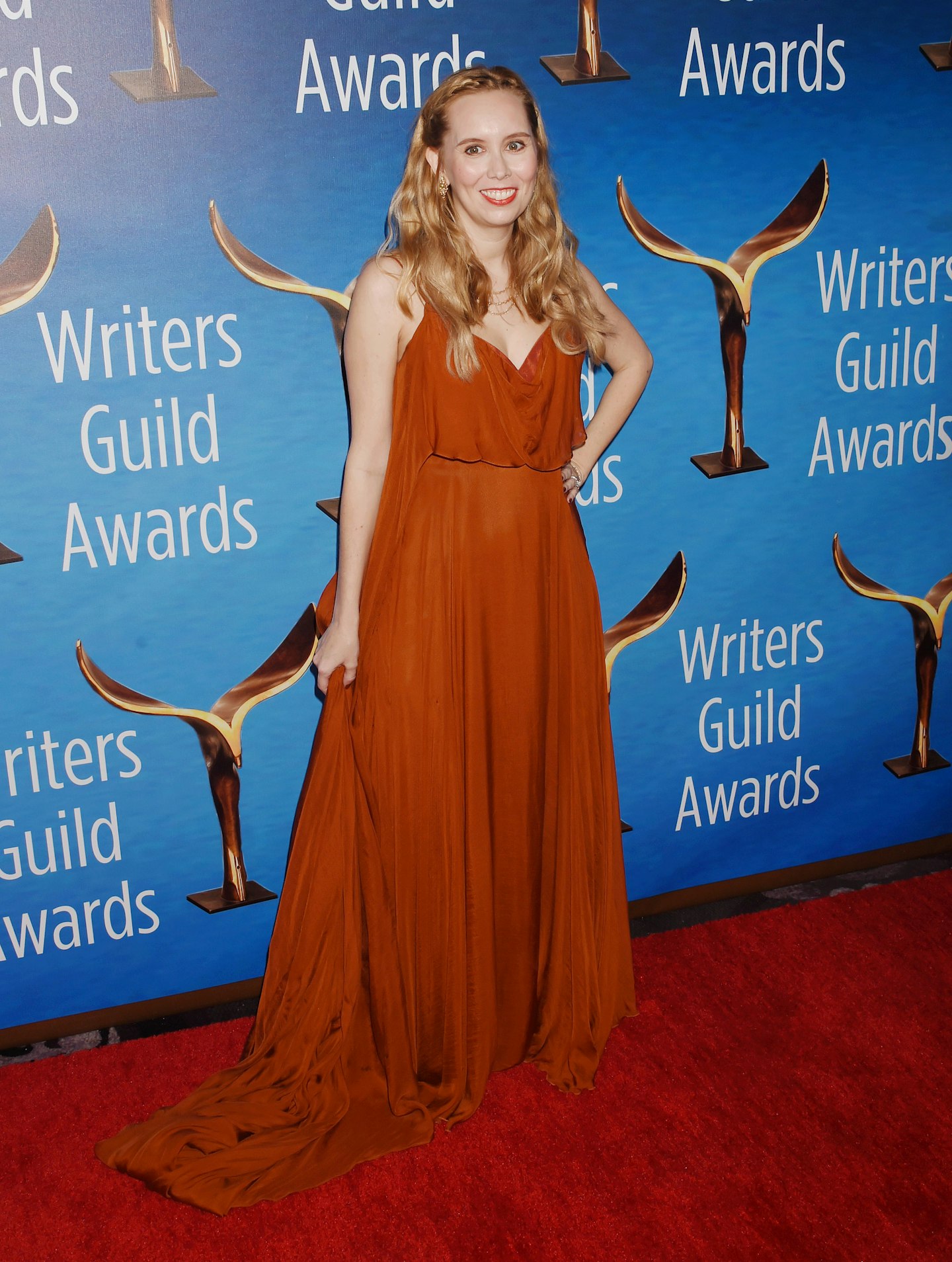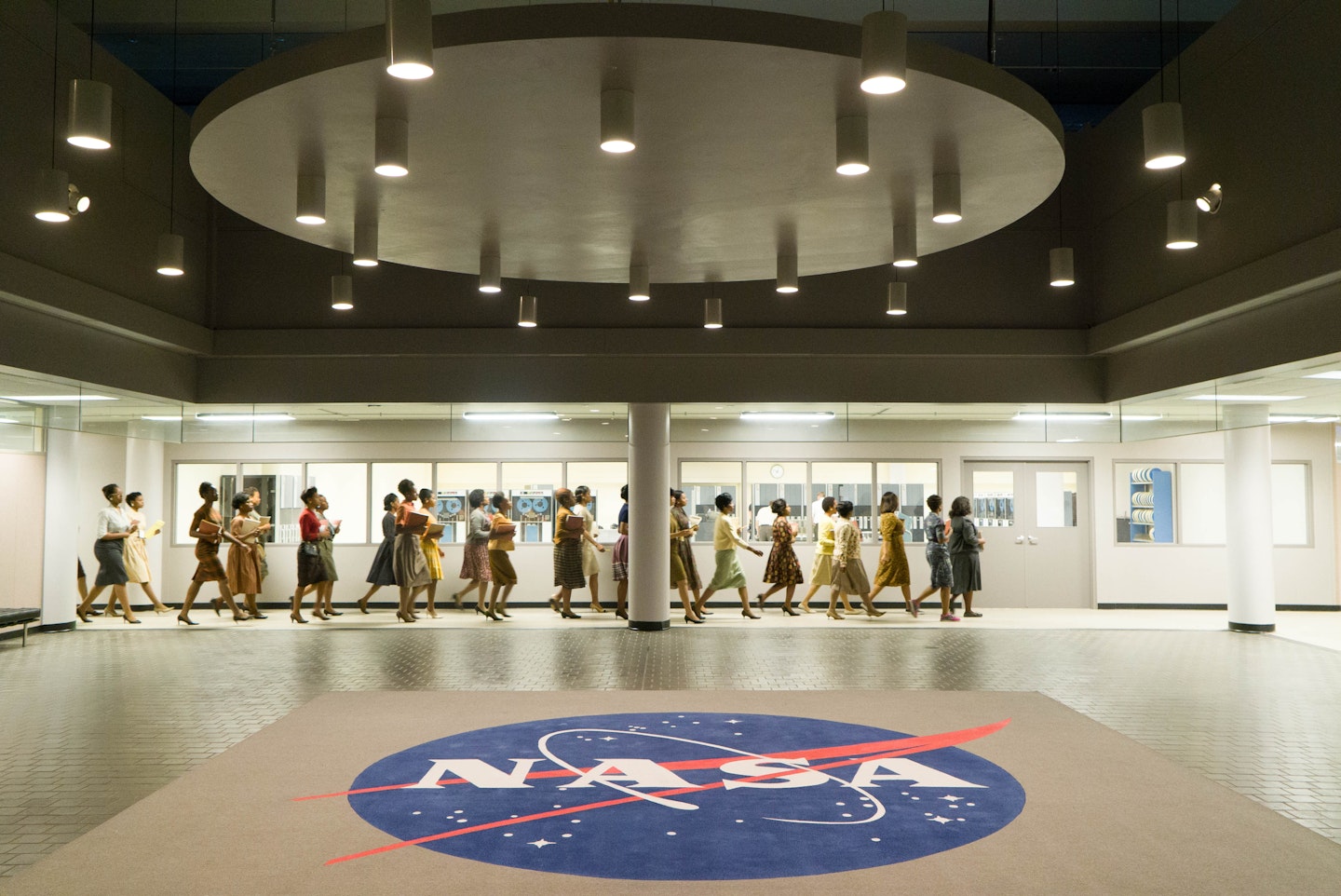You might not recognise the names Katherine Johnson, Dorothy Vaughan and Mary Jackson, but you'll doubtless, however tangentially, have been affected by their work.
Working at NASA at the height of the Cold War - and, closer to home, of the civil rights movement - these three African-American women were among the trailblazers whose number-crunching helped the USA to eventually win the space race. Largely ignored by the history books, their story is finally gaining greater recognition thanks to Hidden Figures, the inspiring film based on Margot Lee Shetterly's book of the same name that is La La Land's most promising rival for the coveted Best Picture Oscar.
As a self-described 'NASA baby,' screenwriter Allison Schroeder was uniquely placed to share Johnson, Vaughan and Jackson's stories, and her winningly warm, uplifting script has earned her a BAFTA nomination, leading to a brush with royalty ('I was inches away from William and Kate and I held myself back, which I term a success,' she laughs).
We caught up with Allison - who is also the only female screenwriter to receive a nod from the Academy this year - to learn more about bringing an overlooked yet increasingly relevant piece of history to the big screen.
The response to Hidden Figures has been amazing. How does it feel to get that sort of feedback from viewers?
It's been a dream. It's such an incredible experience to see field trips going [to see the film], to see little girls dressing up like the characters, to see people of all ages and races being excited by the story. Inspiring girls to get into STEM was always part of the reason for making the film. I work with Google a lot on women's initiatives and they're going to run out of a workforce soon if more of us don't go into tech.
You have a personal connection to NASA, too?
My grandparents both worked at NASA, and then I interned there when I was at high school. I literally played on a Mercury Capsule prototype as a kid and was convinced I could launch myself into space, so I understand the wonder of it all. I also know the culture of NASA, and what the buildings and everything look like, which was so helpful when writing this scipt.
Did you know anything about Katherine Johnson, Dorothy Vaughan and Mary Jackson before you started this project?
It was entirely new. Having grown up as a NASA baby, the fact that I didn't know of these women was really frustrating. I think that was the impetus for all of us to say, 'This has to be made; this story has to be told.' Donna [Gigliotti], the producer, just had the book proposal, as Margot [Lee Shetterly, author of Hidden Figures] hadn't written her book yet. She'd read a spec script that I'd done about Agatha Christie and thought, 'OK, she can write strong women for a period piece.' They had no idea I had a NASA background.

You ended up writing the script at the same time Margot was working on her book. What was that process like?
Margot was very generous. I'd ask 'What exactly does punch card coding look like?' and she would find me some archival footage to look at. I know there was some trepidation from her because whenever Hollywood gets its hands on a true story, it can be a little scary for an author. But Margot told me that when she was about to read my first draft, the last page printed out first, and she started crying when she read it because she knew it was going to be OK. That was a huge moment for me, knowing that I'd made Margot proud.
Did you feel an element of pressure when you were writing the script, knowing you had to do justice to these amazing women?
I said to myself, 'I have to get this right, I'm going to get this right whatever it takes.' In the early draft, I really stuck so closely to history and chronology that I lost a bit of their personalities. Then the producer told me to go and have fun with the characters, and that really freed me up to relax, to show them in their home lives and with each other.
The three main characters in the film all help to open doors for other women. Is that theme of sisterhood an important one for you?
Margot made it very clear that Katherine Johnson [played in the film by Taraji P. Henson] didn't want the story to just be about her, but about the other women as well, so I came into it thinking that it had to be an ensemble. From the very beginning, I wanted this to be a love letter to feminism and female friendship. We don't see it enough; we need to not push each other down but lift each other up, and that's what these women did. Both Mary [Jackson, played by Janelle Monåe] and Dorothy [Vaughan, played by Octavia Spencer] ended up working to advance the younger generation of women coming up behind them, and that was a huge part of their careers. It was a team effort. These are the types of women that I want to see on screen: these are the types of women that I'm friends with. We joke and tease each other but we help each other keep going, too.

The story of Hidden Figures feels especially relevant in this political climate. Did you ever imagine it would feel so timely and pertinent?
I don't think I could ever have seen it would be so timely, but I did always hope that the message would resonate: that coming together despite differences and working for a common goal can lead to extraordinary things. I want more stories about people doing the right thing and coming together; it seems especially important now.
Despite the fact that the film deals with a difficult and often dark point in American history, the characters' humour really stands out. Was that a conscious choice?
[Director] Ted Melfi wanted to maintain a certain sense of humour because that was how these women seemed to deal with the darker aspects of their lives - that was how they made it through. We tried to stay true to the civil rights movement in Hampton at the time, which was not as violent as it was in other parts of the country - we wanted to show the specific type of sexism and racism they were experiencing, and that although they were facing these incredible obstacles, they still kept their sense of humour.
You're the only female screenwriter to be nominated for an Oscar this year. Do you ever feel like you have to fight harder and speak louder in order to be heard in the industry, and to get hold of major projects like this?
I'm not sure that feeling will ever go away, though I hope it will be a little easier, after Hidden Figures. There is a bit of a responsibility to represent for all the women screenwriters, but also to be myself and not have to change into something I'm not. My fellow nominees are all amazing, though I'm like, 'You guys can just wear the same tux over and over again while I'm scrambling for gowns after giving birth three months ago...'
Hidden Figures is already one of the highest grossing Best Picture nominees. It's proof that films helmed by women - and women of colour in particular - can be hugely successful at the box office. That must feel so heartening?
It's been thrilling. Sometimes I still pinch myself and think 'Did we really get to make this?' When I first saw the trailer, I couldn't believe some of that dialogue actually made it into the final film. We were breaking a lot of rules and I'm glad it paid off. I just hope there are more and more films like this.
Hidden Figures is out now. Watch the trailer below
